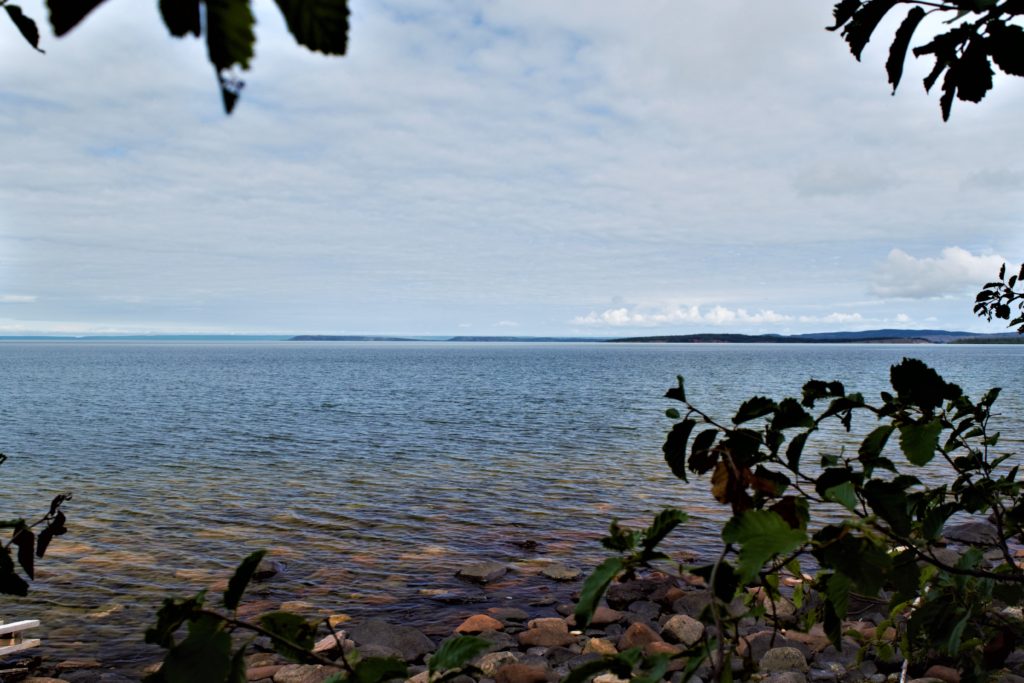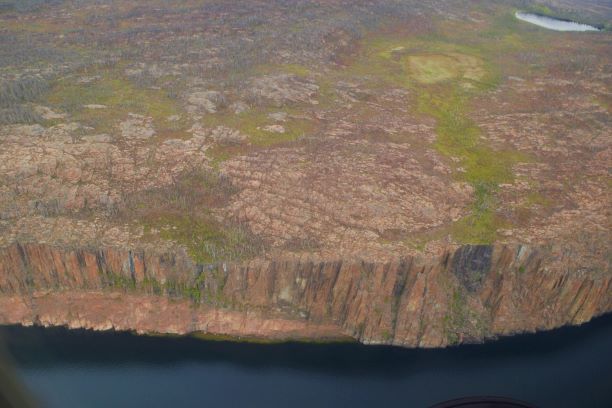Thaidene Nëné: A Feeling of Being Home Again


by Phil Mercredi
Visiting Lutsel K’e on August 21, 2019, for the signing of the establishment agreements for Thaidene Nëné “Land of the Ancestors” Protected Area and celebration of community achievements was somewhat of an emotion for me; it was reminiscent of returning home. Although I am not a member of the Łutsël K’e Dene First Nation, I am a Denesǫłine from the Treaty 8 territory of the Fond Du Lac Denesǫłine First Nation, just over the NWT-Saskatchewan border on the north shore of Lake Athabasca.
The Łutsël K’e topography is very similar to my hometown of Uranium City, SK with huge boreal forest, fresh water lakes, rivers and streams and plenty of hills. There is an abundance of animal species that the Denesǫłine have hunted, trapped and fished for thousands of years – caribou, moose, bears, wolves, lynx and varieties of fish. The entire region is Canadian Shield country – Łutsël K’e is relatively our neighbour and our lifestyle and language are the same.
The time spent in Łutsël K’e was a reminder of my time growing up in northern Saskatchewan. The air is clean, water pristine and the Denesǫłine people are very amenable. I am a new member of the Canadian Parks and Wilderness Society, NWT Chapter (CPAWS-NWT) team and upon re-entering the work environment, after a year-and-a-half hiatus I was very pleased to learn that I was to be present at the official signing of the final agreements for establishing Thaidene Nëné “The Land of the Ancestors” an innovative co-governance arrangement between Indigenous and crown Governments to create Canada’s 47th National Park and newest Indigenous and territorial protected area!
Upon returning north in the fall of 2018, I learned that a part of my transition was the need for a shifting of priorities. I was finding that thriving on the fringes of a modern-day lifestyle, dependent on money and pursuit of material goods was not holding much interest for me anymore, I needed a change. I felt the need to embrace nature again, a sort of a getting-back to my roots. I enjoy being outdoors very much, when I put good energy in to my walks, I feel happy and at peace – it’s become an intrinsic value to me.
The Denesǫłine perceive Mother Earth as being “alive” and our visit to Łutsël K’e for the next three days and three nights would be an exhilarating experience that reflected this. The CPAWS team decided earlier to camp. Thaidene Nëné “Land of the Ancestors” is a big land and water area of remote beauty around and beyond the East Arm of Tu Nedhé (Great Slave Lake).
The flight from Yellowknife to Łutsël K’e takes 45 minutes. I am eager to set up camp as we are told at the Łutsël K’e airport that we would be staying at “Hide Camp”, a small camping area about one kilometre from the community where tanning of moose and caribou hides are taught annually. Unpacking knapsacks of camping gear and food, we set up our tents, in the early afternoon, the wind picks up. After lunch we take an excursion in to Łutsël K’e and meet some of the Łutsël K’e Dene First Nation staff. I break from our group to do a bit of photography in the community.

In the late afternoon, back at camp, the sky looms with dark clouds and the wind blows noisily through the tree branches and leaves, there are whitecaps out on the lake. Looking at the sky I say to myself, “It’s going to be a cold night”. We have a quick snack. I drink the remaining cup of warm tea from my thermos. The wind gives me a bit of shiver, we are readying to bed down for the night. Tucking my head into the warmth of my sleeping bag, it brings chilly memories of my family’s fish camp on the shore of Lake Athabasca, the nights there in late August were wintry but our spacious canvas wall tent, fitted with an airtight wood stove, kept our family warm all through the night. My thought turns to listening for the sound of the waves slapping against the rocky shoreline. The morning reveals a clear sunny sky. After breakfast, we make our way through an almost tortuous bush trail back to Łutsël K’e. The community is quiet with unleashed dogs wandering the town. It contents me to know that I am back in Denesǫłine territory, in familiar ambiances.
The community is different now from when I first visited it in the early 1970s. At the time, I worked for the Indian Brotherhood of the NWT (now the Dene Nation) as a photographer and beginning reporter. I was a guest at the home of the then Chief Pierre Catholique and his wife Judith. I sat near the fire pit as the chief began gutting and filleting whitefish to grill on the open fire. He starts telling me about the time a small group of federal government officials came to his community, then called ‘Snowdrift’, to discuss their plan to create a National Park in the East Arm of Great Slave Lake. Pierre said he understood their vision but felt it inappropriate that a number of officials came into his community to talk of a plan for a National Park; he was the only Dene leader meeting with them. He told the officials that if they want to meet with Dene leadership, there will be as many Dene leaders as there are officials. In their attempt to gain favour of their plan, the federal officials’ outreach was rebuffed by the people of Łutsël K’e. At the time, I thought that was a daring move by the chief.
I realize now that Pierre was a catalyst for change in his community. I recall him saying that it is important to move forward together but we also need to be strong as our own communities. Since that time, generations of leaders took the time to be sure that there was equal representation at the table.
Today, the signing of Thaidene Nëné is a reconciliation of that long process and statement of Indigenous leadership which culminated in a partnership between Indigenous and crown governments to establish the Thaidene Nëné Indigenous Protected Area. Interestingly, I had some witness to both ends of the process.
Our last day at Hide Camp, I take a brief walk up the trail and at the base of a spruce tree I place a tuft of tobacco – an offering of thanks for protection, well-being and good thoughts. We pack up our tents and gear and relocate to James Marlowe’s camp at the outskirt of the town. As we leave, I look back at ‘Hide Camp’ to say Marci Cho (thank you).
I am thankful for the visit to Thaidene Nëné – “Land of the Ancestors” and to the people of Łutsël K’e for their welcoming reception and their vision for protecting a significant area of their homeland for their future and for all Canadians.

![CPAWS NWT Logo [Transparent Background] CPAWS NWT](https://cpawsnwt.org/wp-content/uploads/2018/09/CPAWS-NWT-Logo-Transparent-Background.png)